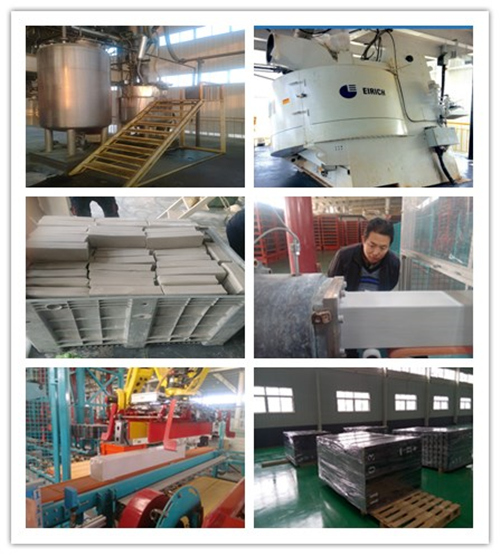Nitrogen oxides (NOx) are mainly derived from the combustion of coal, petroleum, and other fuels used in production and life, as well as industrial production. NOx and airborne carbon oxides are prone to photochemical reactions to form photochemical smog, which leads to reduced air quality, reduced solar radiation, and the formation of hazy weather. NOx is also easily oxidized by the oxygen in the atmosphere, forming rain and acid mists with rain, which exacerbates environmental degradation. Selective catalytic reduction (SCR) using NH3 as a reducing agent is one of the most widely used and most efficient NOx removal methods.
During the “Twelfth Five-Year Plan†period, China vigorously carried out NOx control technologies for coal-fired flue gas, and introduced or independently developed a series of medium-temperature denitration catalysts that are suitable for flue gas temperatures in the range of 300-400°C. However, in addition to coal-fired power plants, there are a large number of industrial combustion flue gas in China, such as coke ovens, glass kilns, ceramic furnaces, cement kiln, etc. The NOx emissions account for 30-40% of the total, and the number of boilers Large, single-contaminant emissions, high concentrations of pollutants, discharge temperatures generally below 300 °C and other characteristics, the existing medium-temperature catalyst and denitrification system is difficult to handle. Therefore, it is imperative to develop R&D and industrial applications of low-temperature denitration catalysts.
Dr. Tang Zhicheng, a researcher at the National Center for Fine Petrochemicals, Institute of Chemical Physics, Lanzhou Institute of Chemical Physics, Chinese Academy of Sciences, directed the team to address the problems of low NOx conversion rate, poor sulfur resistance, and easy formation of ammonium bisulfate blocking holes and short life span in low-temperature denitration catalysts. A series of catalytic new materials have been designed to successfully solve the problems of low-temperature denitration catalysts such as poor sulfur resistance and poor water resistance. The catalyst has the characteristics of low NOx conversion rate and low SO2 oxidation rate, and the denitration efficiency can reach above 95% in the low operating temperature range (200-300°C), which can fully meet the practical application requirements of the low-temperature denitration catalyst.
Based on a large number of small trials, the company recently cooperated with Shandong Hairun Environmental Protection Technology Co., Ltd. The team organically combines the laboratory's pilot study and the company's existing production process to complete the trial production of monolithic honeycomb catalyst for low temperature denitrification. . In the company's existing annual production capacity of 10000m3 scale production line to enlarge, through batch production methods to conduct a detailed inspection of the production process, to achieve a ton / batch of amplification and continuous production, optimization of the ingredients ratio, reaction temperature, time, pH, etc. key parameter. Combining the honeycomb catalyst kneading and forming, a continuously extruded plastic catalyst slurry was prepared, and a complete set of low-temperature denitration catalyst production technology package was formed. In the trial production process, a total of more than 5 tons of material was fed and about 12 cubic meters of catalyst was extruded. The qualified rate of the low-temperature denitrification catalyst product produced reached more than 90%. The appearance requirements of the spot inspection unit were all qualified, and the physical and chemical performance requirements were better than the national standards.
The low-temperature denitration catalyst is expected to be widely used in industrial combustion kilns (such as coke ovens, glass kilns, ceramic stoves, etc.) to reduce the NOx emissions of industrial flue gases in our country and realize the dual goals of economic growth and sustainable environment.
The above work was supported by the Chinese Academy of Science and Technology Service Network Project (STS) and corporate cooperation projects.

CNC medical accessories refer to precision components used in medical devices that have been produced using computer numerical control (CNC) machines. These accessories are precise and accurate, making them an essential part of medical devices that require high-quality equipment.
CNC medical accessories offer several advantages over traditional manufacturing methods. Due to the precision of the CNC machines, they can create complex parts to exact specifications with minimal errors. This ensures that each component is precisely crafted, leading to high-quality medical accessories that offer superior performance and safety.
CNC medical accessories are used in a range of medical devices, including surgical instruments, implants, and diagnostic equipment. They are produced using a range of materials, including stainless steel, titanium, and plastic.
One of the significant advantages of CNC medical accessories is their versatility. The CNC machines used to produce these accessories can create parts in a wide range of shapes and sizes, making them suitable for a variety of medical applications. Additionally, they can produce parts with intricate shapes and features that would be challenging, if not impossible, to create using traditional manufacturing methods.
CNC medical accessories are also durable and can withstand rigorous medical environments, including sterilization procedures. This ensures that these accessories provide consistent and reliable performance throughout their lifetimes.
Finally, CNC medical accessories are also beneficial in the development of new medical technologies. With their ability to produce complex and precise parts, these accessories offer researchers and manufacturers the ability to create innovative medical devices that provide superior performance and patient outcomes.
In summary, CNC medical accessories are vital components of the modern medical industry. Their precision, accuracy, and versatility make them an essential tool for a wide range of medical applications. With their ability to produce complex and precise parts, they offer the potential for the development of innovative medical technologies that offer high performance and safety for patients.
Hospital Bed Accessories,Oxygen Tank Holder,Oxygen Cylinder Accessories,Stethoscope Watch
Lizhi Precision Manufacturing Technology Co.,Ltd , https://www.lzautoindust.com